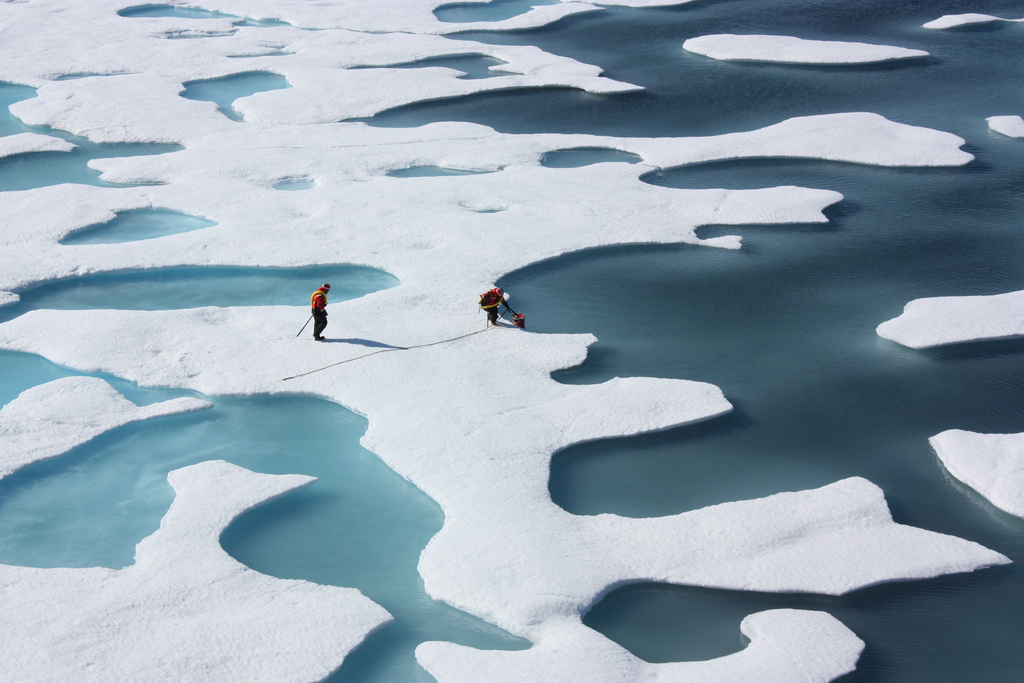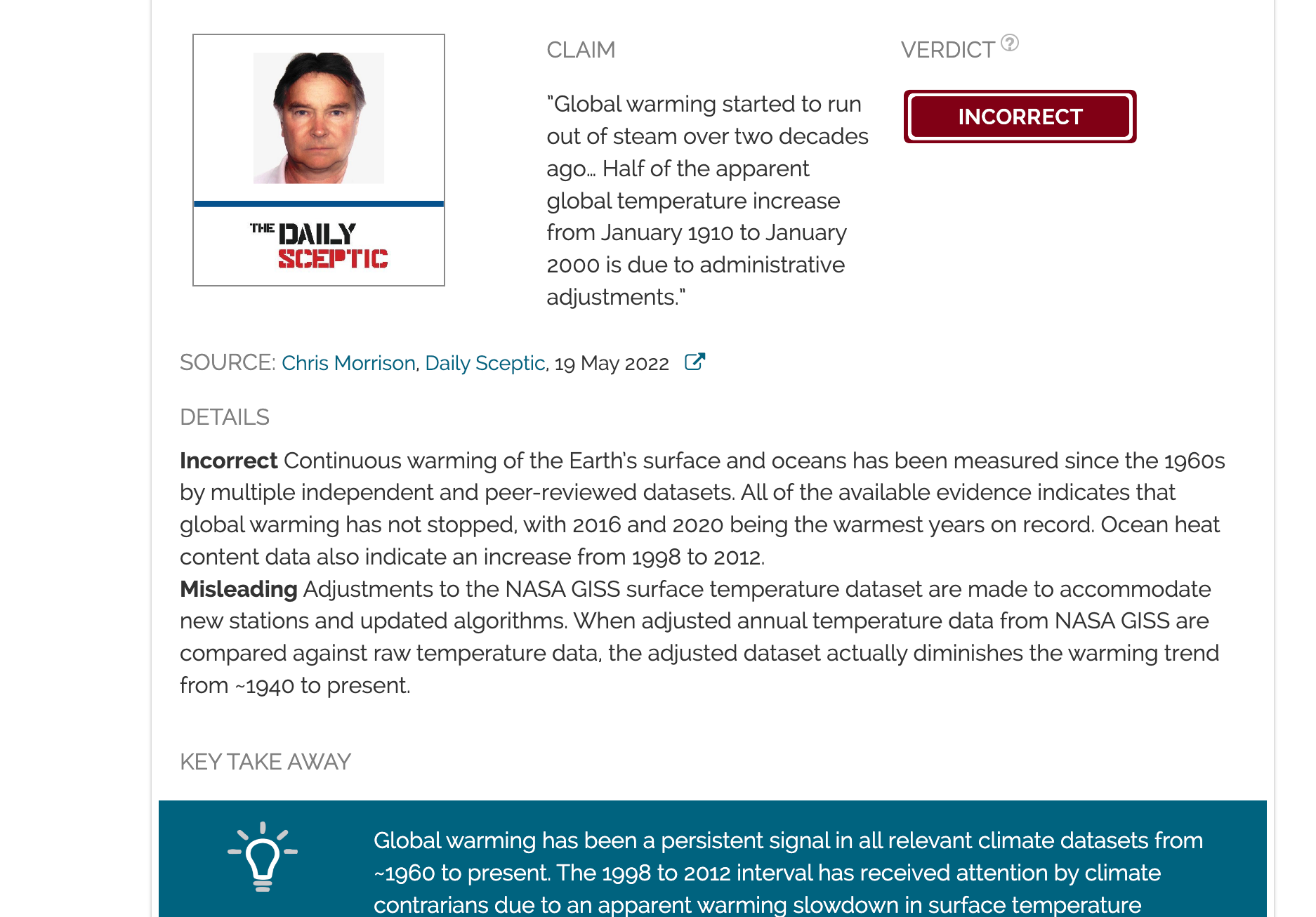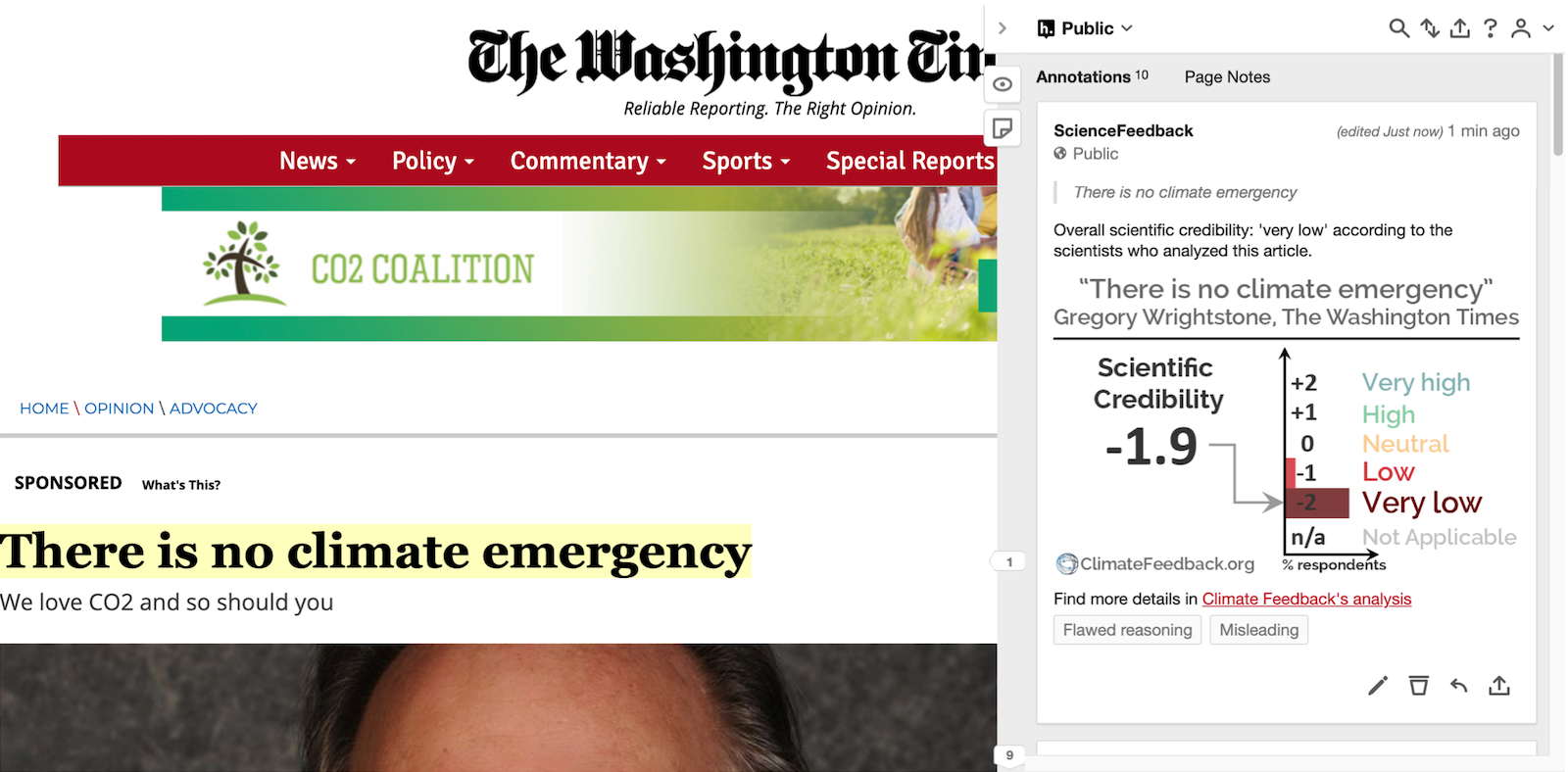- Climate
Climate sensitivity estimate given in Heartland Institute’s report is misleading
Key takeaway
Without additional feedbacks, a doubling of CO2 would cause 1.2 - 1.3°C warming. Feedbacks do exist in the real world, however, and this increases the expected warming to 1.5 - 4.5°C.
Reviewed content

Verdict:
Claim:
Doubling the concentration of atmospheric CO2 from its pre-industrial level, in the absence of other forcings and feedbacks, would likely cause a warming of ~0.3°C to 1.1°C
Verdict detail
Misleading: The claim only highlights warming in the absence of any feedbacks, meaning it has limited relevance to the real behavior of the climate system. Even taken on its own, the CO2-only warming range given in this claim is lower than can be determined from physics.
Full Claim
Doubling the concentration of atmospheric CO2 from its pre-industrial level, in the absence of other forcings and feedbacks, would likely cause a warming of ~0.3°C to 1.1°C, almost 50 percent of which must already have occurred.

Postdoctoral researcher, Los Alamos National Laboratory
Neglecting feedbacks in this statement is seriously misleading to uninformed readers. Feedbacks have been clearly identified as major amplifiers of the initial CO2-forced change. These feedbacks are explicitly resolved in climate models.

Research Scientist, Lawrence Livermore National Laboratory
The first part of the statement is true, though the numerical values are off. Without other feedbacks to amplify the planetary heating due to CO2, the expected global warming from doubling CO2 is about 1.2 to 1.3°C. See p.96 of Roe (2008)1 for a nice explanation of this.
Of course, we know that there are important feedbacks in the climate system, and several of them are strong and positive, causing additional warming on top of this basic response. Narrowing down the plausible ranges of the strength of these feedbacks is an abiding goal of climate science (e.g. Stevens et al, 2016)2. Evidence has consistently pointed towards a global warming of 3°C for a doubling of CO2, albeit with uncertainty. See Armour (2017)3 for a recent study that adds to this body of evidence. So the quoted no-feedback warming of ~1 degree is completely irrelevant to Earth. It is useful only in an academic sense as a hypothetical baseline climate response that is subsequently modified by feedbacks.
The second part of the statement—that half of the warming must have already occurred (presumably because CO2 levels have increased by 50% since preindustrial)—is not true. We do not expect the ultimate global warming due to doubling of CO2 to occur at the exact moment that CO2 is doubled any more than we expect water to instantaneously boil when a pot is placed on a hot stove. There is a lag between the heating due to CO2 and the surface temperature response owing to the heat capacity of the climate system, especially the ability of the ocean to take up heat.
- 1- Roe (2008) Feedbacks, Timescales, and Seeing Red, Annual Reviews
- 2- Stevens et al (2016) Prospects for narrowing bounds on Earth’s equilibrium climate sensitivity, Earth’s Future
- 3- Armour (2017) Energy budget constraints on climate sensitivity in light of inconstant climate feedbacks, Nature Climate Change

Professor, Victoria University of Wellington
The CO2-only warming is at the top end of this range. The water vapor feedback roughly doubles the warming, and other feedbacks (such as ice-albedo) add another degree or so. The most likely value for real-world climate sensitivity is around 3°C, with a range from about 1.5°C to 4.5°C, as has been well known for 40 years.



